Interview: Shinichiro Watanabe
January 1, 2020 · 0 comments
By Andrew Osmond.
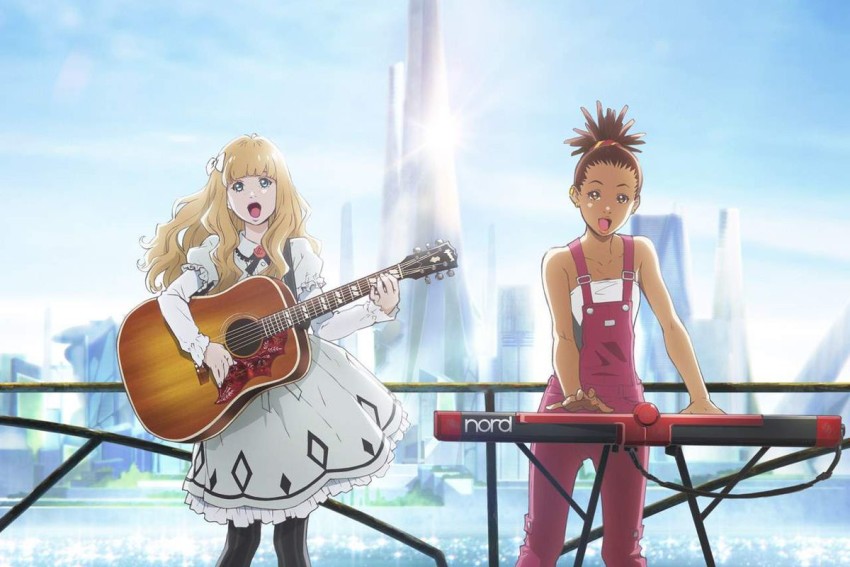 “It’s the same as British weather, really,” Shinichiro Watanabe observes about the trials of life to a London audience at MCM Comic Con. Outside it’s winter and the island’s weather is at its dreariest. “We don’t have good weather here… but just by having that bad weather, one sunny day makes it worthwhile, doesn’t it?” The audience cheers its approval.
“It’s the same as British weather, really,” Shinichiro Watanabe observes about the trials of life to a London audience at MCM Comic Con. Outside it’s winter and the island’s weather is at its dreariest. “We don’t have good weather here… but just by having that bad weather, one sunny day makes it worthwhile, doesn’t it?” The audience cheers its approval.
The director of Cowboy Bebop, Terror in Resonance, Space Dandy and Samurai Champloo is a friend to our soggy land, often visiting our shores. On this occasion, he’s promoting Carole & Tuesday, his new series about two budding amateur girl musicians on a terraformed Mars, now on Netflix. His co-director Motonobu Hori is here too. In his public Q&A, they reveal that a stretch of a show involving a TV talent contest was directly inspired by Britain’s X Factor. That stone-faced judge in the anime who hates all the acts… Yes, it’s based on him.
In the Q&A, Watanabe and Hori also explain that Watanabe handled the script and storyboard for the series, while Hori took on other duties. Watanabe also took the blame for Carole & Tuesday’s potty-mouthed song “Galactic Mermaid”, which he described as expressing those moments when only four-letter words will do. “F*** everything!”, Watanabe declared to the crowd in perfect English, perhaps a convention first. It seems many of those moments occurred when Watanabe made his Blade Runner film “Black Out 2022” – he revealed on stage that “I was fighting against a certain producer every single day.”
Later, I can interview Watanabe and Hori together. (The answers are Watanabe’s except when otherwise indicated.) “Do you need to take a picture?” Watanabe asks as I sit down. When I say no, he explains, “Because in all the official pictures I wear shades – my trademark – but as you don’t, I’ll stick to the glasses.”
The interview starts with questions about Carole & Tuesday, with a side-trip into Hori’s time on Satoshi Kon’s series Paranoia Agent. Then I ask Watanabe about his illustrious career, taking in the role of fate in Cowboy Bebop, whether Kids on the Slope is really BL, and if the young Watanabe wanted to blow up Tokyo. Read on…
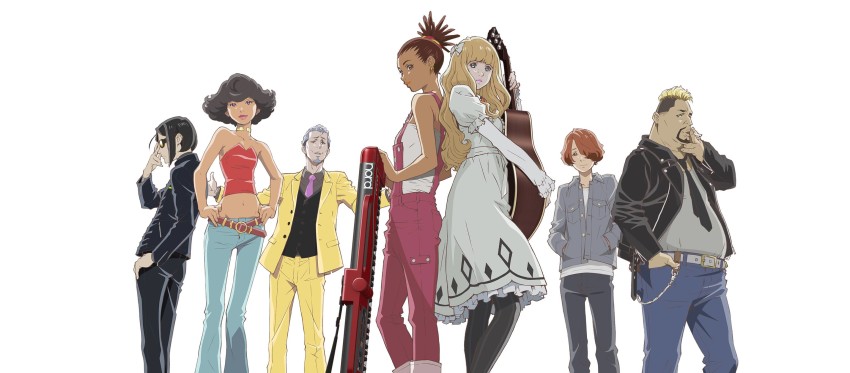 How did you both come to work together on Carole & Tuesday?
How did you both come to work together on Carole & Tuesday?
(Watanabe) I wrote the proposal for Carole & Tuesday, then found somebody who could co-direct it. Within the animation production process, the director has to do a lot. I couldn’t cover it all myself, so I found someone who could share the work. It’s the first time I’ve worked with Hori, but even when I was making Kids on the Slope, I was eying him up as a potential collaborator. Therefore I can say that Hori was a secret weapon.
How did you become aware of Hori?
It was really word of mouth. When I was speaking to the staff members around me, Hori came with strong recommendations; they all said he was such a wonderful guy but also that he was very fashionable as well.
Fashionable?
It’s because the protagonists in Carole & Tuesday are two girls. If my co-director didn’t care about fashion, appearances, that could be a problem. That’s why I wanted someone who was trendy and fashionable.
Like other Watanabe works, Carole & Tuesday has diverse lead characters, being about the friendship between a black girl and a white girl. Were the characters always envisaged that way?
It was decided from the very beginning. Even before Cowboy Bebop, from my work on Macross Plus, I was very conscious of having diverse characters.
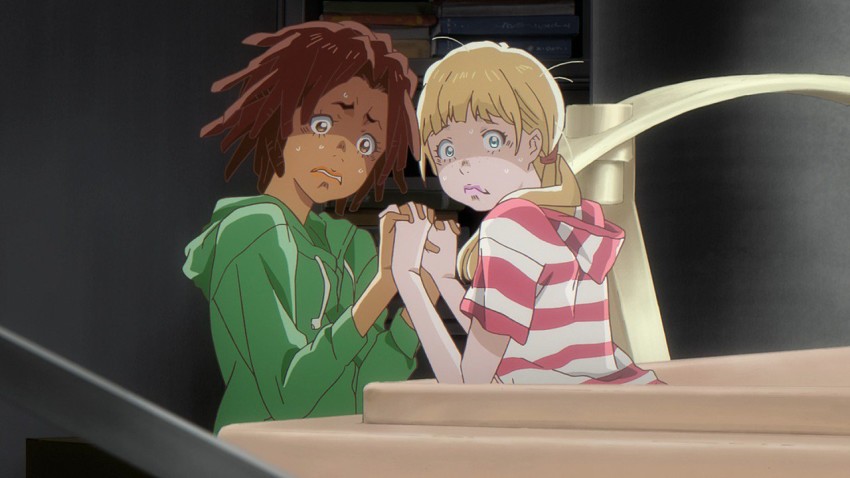 I love the first opening title sequence for Carole & Tuesday. I noticed that in these titles, the girls could be in a present-day city; there’s nothing in the titles to suggest they’re in the future or on Mars. I wondered why that was the case.
I love the first opening title sequence for Carole & Tuesday. I noticed that in these titles, the girls could be in a present-day city; there’s nothing in the titles to suggest they’re in the future or on Mars. I wondered why that was the case.
The opening sequence was commissioned to an artist called Tadahiro Uesugi as a concept art. Mr Uesugi got involved with the recommendation of Hori.
(Hori picks up the explanation.) He’s quite well-known working for women’s magazines and department store advertising. I was vaguely aware of him from those works; as an animator, I started to recognise him more when he did concept art for Disney. [Uesugi’s film credits include concept art for Disney’s animation Big Hero 6; he was also a visual designer on the stop-motion film Coraline by the Laika studio.] His works are very visual and graphic, but also rich in realism. He’s extremely adept at depicting light as well. And so we wanted to take that on to the animation.
The first opening sequence is definitely realistic and leans toward the contemporary world, quite like today’s New York. For the second season, the opening is changed and Uesugi seems to have digested the world of Carole & Tuesday a bit more, so it does have a slightly more SF feeling. The atmosphere is realistic, but a little bit more hyperreal. However, saying that, the first season’s opening wasn’t a mistake at all. In Carole and Tuesday’s world, they still play an acoustic guitar; it’s not an “SF” world in the sense that everything is futuristic. So I think the opening’s approach was a good one.
(To Hori) You have worked on many anime before Carole & Tuesday, including “Happy Family Planning,” the remarkable eighth episode of Satoshi Kon’s 2004 series Paranoia Agent. The largely self-contained episode was a macabre black comedy about two men and a child trying to kill themselves. A sequence where they try hang themselves was heavily censored in Britain by the BBFC. Did you animate that particular scene?
 (Hori) Not that particular scene. The unit director was a person called Satoru Utsunomiya, a legendary animator in the industry; it was an honour to work with him. The episode was very much in his style, and the way that he didn’t really think about the balance with the other episodes was very much his style too.
(Hori) Not that particular scene. The unit director was a person called Satoru Utsunomiya, a legendary animator in the industry; it was an honour to work with him. The episode was very much in his style, and the way that he didn’t really think about the balance with the other episodes was very much his style too.
(To Watanabe) Why did you first decide to enter the anime industry?
The year that I entered the anime industry, 1984, was the year that three films came out; Nausicaa of the Valley of Wind, Urusei Yatsura: Beautiful Dreamer [one of the first anime to define the vision of Mamoru Oshii] and Macross: Do You Remember Love? At the time, all those films exceeded any of the qualities of the live-action films being made in Japan. I always wanted to make films, so at the time I thought it was better to go into anime than live-action for film-making.
So why were you interested in going into film before that. Were you a film fan?
Yes, I watched lots of film, both animation and live-action.
You’ve mentioned your love of films such as Dirty Harry and Enter the Dragon, but what were your favourite Japanese live-action films?
He might not be well-known overseas, but there is an actor called Yusaku Matsuda; he was the model for Spike Spiegel in Cowboy Bebop. I liked anything with him. My particular favourite is The Beast to Die [a 1980 thriller, he is better known abroad for his last role in Ridley Scott’s Black Rain, and he also inspired one of the leads in Mamoru Hosoda’s Summer Wars — Ed.].
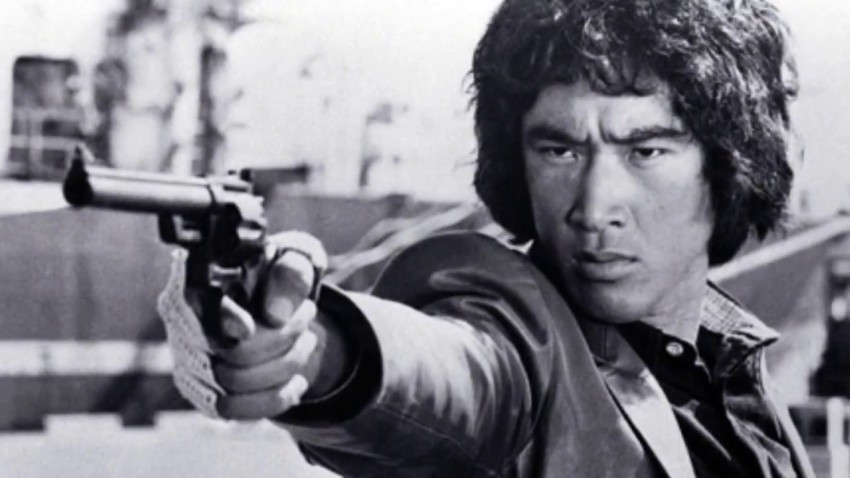 Going on to Spike Spiegel, was his personality a reflection of your own feelings when you made Cowboy Bebop?
Going on to Spike Spiegel, was his personality a reflection of your own feelings when you made Cowboy Bebop?
He’s the character that I aspire to be (laughs).
Some fans argue about the final episode of Cowboy Bebop. (spoiler). In the episode, Spike makes the decision to go to his last battle, even while his friends beg him not to go. Some viewers may think Spike’s being very cool, others that he’s being very stupid. Do you have any comment?
It’s not that I made that decision personally, by myself. It’s that destiny led him to come to that kind of finale. It wasn’t really me, it was that the story needed to complete in that way. This is not a joke; I create anime based on that kind of feeling. It’s not like a creator could control everything when you’re creating something. Characters and also narratives themselves have their own paths they need to lead.
For example, if a character is planned to be killed off, they might not die so easily. The character says, “I don’t want to die, not yet!” I do believe that destiny actually has a final say. So for the fans’ feedback of Spike being stupid for going into his final fight; well, human beings are stupid.
Do you have any comments about the upcoming live-action version of Cowboy Bebop?
I’ve been so busy with Carole & Tuesday so I’m not really involved with the live-action Cowboy Bebop. I’ve heard through the grapevine that the main actor is injured, which is why the filming has stopped [referring to Spike actor John Cho’s on-set knee injury in October 2019]. But I haven’t seen any finalised scenes at all, even one cut, so I don’t really know how it’s going. But I’m praying that it is going well.
In “Baby Blue,” the short film you made for the anthology Genius Party, a boy steals a grenade from an army base and later detonates it. A few years later, in Terror in Resonance, you show two boys blowing up large parts of Tokyo. Does this reflect feelings or fantasies you had when you were a teenager?
Eh? (Watanabe is startled; the translator clarifies). Yes, exactly, it is depicting my childhood memory of causing explosions everywhere. (adds) That’s a lie.
I meant metaphorically, whether you had those feelings.
Yes, of course I had. Another example is Vincent from Cowboy Bebop [the terrorist adversary in the 2001 feature film]. When I was a teenager, I did feel like I didn’t fit in, I was a social misfit. So I did think that society could be blown up. But if we go into any more details, I might get arrested or blacklisted, so let’s stop it here.
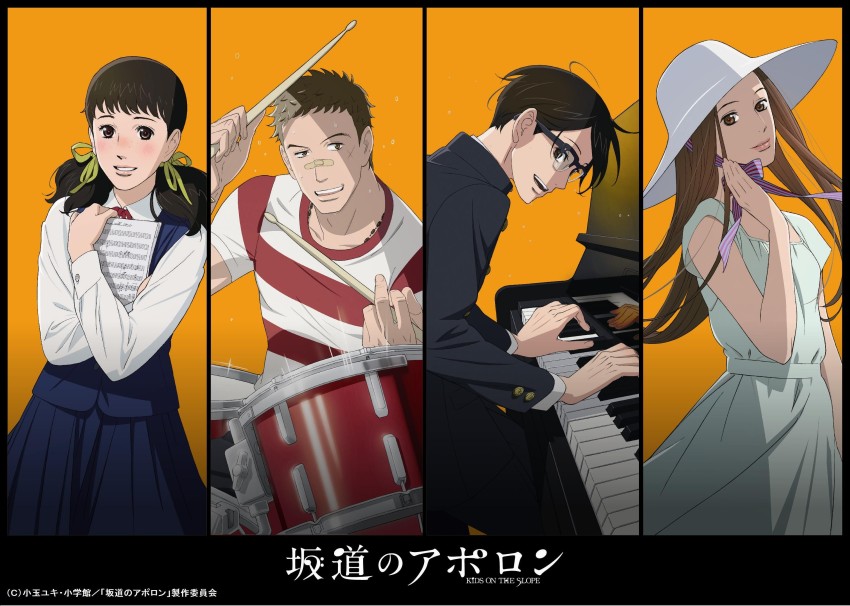 I really like your series Kids on the Slope, and I’ve argued with friends about whether it’s really a “BL” or yaoi anime, given the relationship between the main male characters. Do you have any comment?
I really like your series Kids on the Slope, and I’ve argued with friends about whether it’s really a “BL” or yaoi anime, given the relationship between the main male characters. Do you have any comment?
First of all, because Kids on the Slope is based on a manga, I didn’t create the characters. But I have spoken to the manga artist, Yuki Kodama. Kodama said she didn’t really see it as BL. However, she was very particular about those two male characters having a very close relationship. In the first episode, there is a scene with them linking their hands [probably referring to their very first meeting, when Kaoru finds Sentaro napping under a sheet]. I actually cut that scene initially but Kodama specifically asked, ‘No, this scene is important, so you have to keep it in.”
So I think as the original creator, she was probably aware on the subconscious level of two men having a very close relationship together, caring for each other. But as a point of view on sexuality, I personally feel that whether it’s between two men or two women, or a man and a woman, it really doesn’t matter so much in terms of what category they see themselves in. What’s more important is the love itself, the contents of love that they have within the relationship. So it really doesn’t matter whether they’re homosexual or heterosexual, that’s less important.
I feel that this kind of idea is strongly linked to the world that you envisaged as a child, the ideal world. As a child, I envisaged the world – in terms of race, as well – where everyone was more diverse and also more integrated. And in terms of sexuality, I thought everybody would gain their rights within each others’ rights, and society would be more equal, regardless of their sexuality. That was my vision of the future; it seemed extremely cool to me.
That was the world I predicted thirty, forty years ago. Now, we haven’t reached that stage yet, and I don’t think that’s a good thing. Someone who was unthinkable to be a President is now a President of a certain country. So we could say that Carole & Tuesday is a resistance to those movements that are happening worldwide, and also it’s a representation of the world I envisioned as a child.
The second half of Carole & Tuesday arrived on Netflix on Christmas Eve. Watch it here!
Andrew Osmond, anime, Carole & Tuesday, Cowboy Bebop, Japan, Kids on the Slope, Motonobu Hori, Shinichiro Watanabe
Leave a Reply